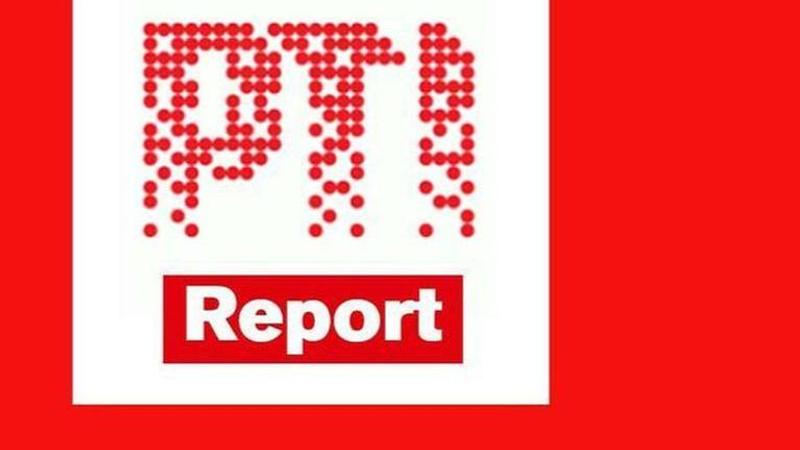Published 11:44 IST, December 31st 2019
History behind, Das-led RBI charts new trails sans acrimony
When the Narendra Modi government, stumped by the sudden resignation of Urjit Patel, parachuted retired bureaucrat Shaktikanta Das to RBI in December 2018, many expected a great lull in the public acrimony that marred the days of his academically more illustrious predecessors Patel and Raghuram Rajan.

When the Narendra Modi government, stumped by the sudden resignation of Urjit Patel, parachuted retired bureaucrat Shaktikanta Das to RBI in December 2018, many expected a great lull in the public acrimony that marred the days of his academically more illustrious predecessors Patel and Raghuram Rajan.
And 'the history graduate', as Das was parodied in his initial days, did not disappoint as the 25th governor of the central bank. He completed one year at the helm on December 12.
But challenges are galore for the nation's chief money man as Das' record-setting rate cuts did not alleviate credit crisis, especially in the shadow banking space, and now turmoil in the cooperative banks sector due to the PMC scam.
Also, falling growth and spiralling inflation are the other critical challenges facing the Reserve Bank of India (RBI) in the New Year.
So far this fiscal, bank credit has grown just 7.8 per cent, against 13.6 per cent a year ago and might plunge to a 58-year low of 6.5-7 per cent by March, if the latest projections are anything to go by.
It was in fiscal 1962 when credit demand was lower than this on record. At that time, it stood at 5.4 per cent.
Ironically, the more the Reserve Bank of India (RBI) slashed rates, the faster the economy turtled, hitting a 25-quarter low of 4.5 per cent in the September quarter.
Even as it eased the rates, the RBI slashed growth estimates by an unprecedented 240 basis points since the rate cutting cycle began in February to a low of 5 per cent.
Similar has been its loss of face on the inflation front, which, after hovering under the glide path for a few years, has suddenly screeched up and is now pegged sharply higher at 5.1-4.7 per cent for 2020.
Das, who as the economic affairs secretary managed the note ban mayhem with elan both for the government and the RBI, could temper the raising tempers between the central bank and the government, was primarily because he gave in a lot of space to North Block.
Be it the historic cash transfers by setting up the Bimal Jalan panel in December 2018 itself or taking some of the crippled state-run banks out of the RBI radar or in getting a new NPA framework in place by June 2019 or in opening a special financing window for MSMEs.
Under his governorship, Das silenced the ever-hungry market and North Block mandarins with 135 basis points reduction in interest rates through five successive rate cuts.
However, the central bank's youngest Deputy Governor ever -- Viral Acharya -- quit six months before his three-year term was to end in June 2019.
But those who know Das, including the RBI staff, fully back his working style and glasnost.
RBI Central Board member Sachin Chaturvedi described Das as a person who brings in pragmatism, commitment, transparency and sincerity to the table.
"Das has succeeded in getting government and other functionaries together and has made the board a cohesive platform," he told PTI.
Das also settled the autonomy issue -- most contentious of all -- and had said that so far as decision-making is concerned or taking a final call on any issue, they are taken by the RBI and is more than 100 per cent autonomous in decision-making.
"Nobody interferes in my decision-making," Das said in September.
The RBI, under Das, has been instrumental in diversifying liquidity management toolkit by launching the dollar-rupee swap auctions -- buying dollars and releasing equivalent amount of rupees into the system to ease liquidity.
And the latest in containing rupee volatility and bond spikes are the open market operations twist under which RBI buys and sells equal quantum of gilts.
Allowing non-residents to participate in rupee interest rate derivatives markets and making NEFT 24x7 and free are among the other decisions this year.
RBI also put its foot down when it declined to raise the retirement age of private sector bank CEOs from 75 years, refused green-signal to Indiabulls' takeover bid for the crippled Lakshmi Vilas Bank and said no to Uday Kotak's convoluted stake dilution move at Kotak Mahindra Bank. The last matter is now before the Bombay High Court.
The apex bank also got regulatory powers of the NHB following the crisis at DHFL, also the first non-banking finance company to be referred for insolvency proceedings.
It also forced banks to link all fresh retail loans to an external benchmark, following which repo rate was made as their benchmark for loan pricing.
While the RBI should be credited for seeing the slowdown coming and cutting rates, the apparent fault was in not anticipating severity of the economic slump.
However, the central bank unexpectedly paused rate cuts in December. It indicates the RBI is waiting for the budget on quality of fiscal deficit and quantum of off-balance-sheet borrowings, among others.
Having worked with three finance ministers, Das also made the long and stormy RBI board meetings into non-events in no time with his consultative process even as he made it clear that the central bank is not a "cheer leader" for anyone.
All said, it is difficult to say now whether it has been a year of floccinaucinihilipilification or that Das maintained a Panglossian countenance, smiling away at every difficulty.
Monetary Policy Committee's Chetan Ghate had used the 29-letter word --floccinaucinihilipilification -- which refers to an action of estimating something as worthless.
The New Year might have a clear if not direct answer to Panglossian ways.
Updated 11:44 IST, December 31st 2019




